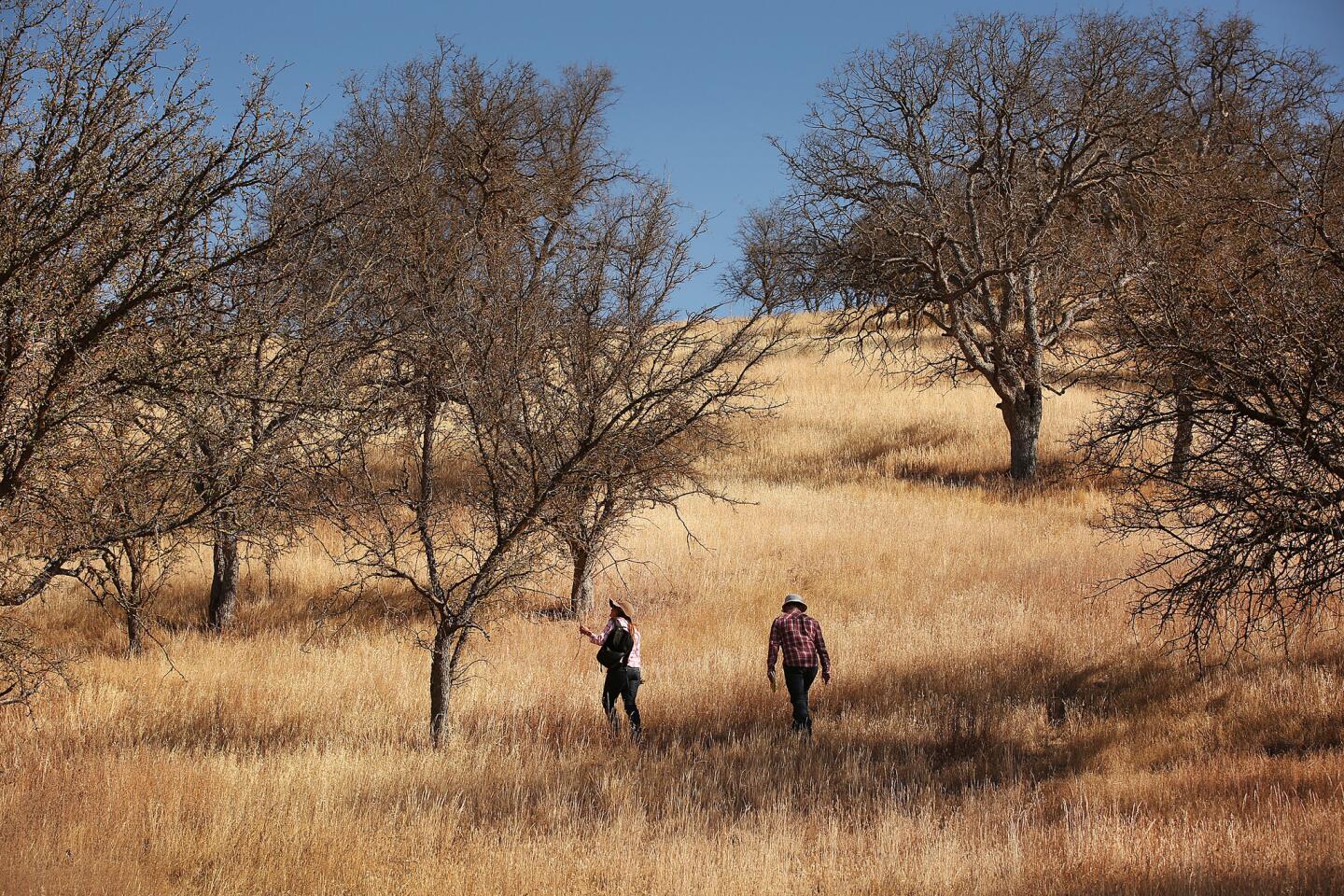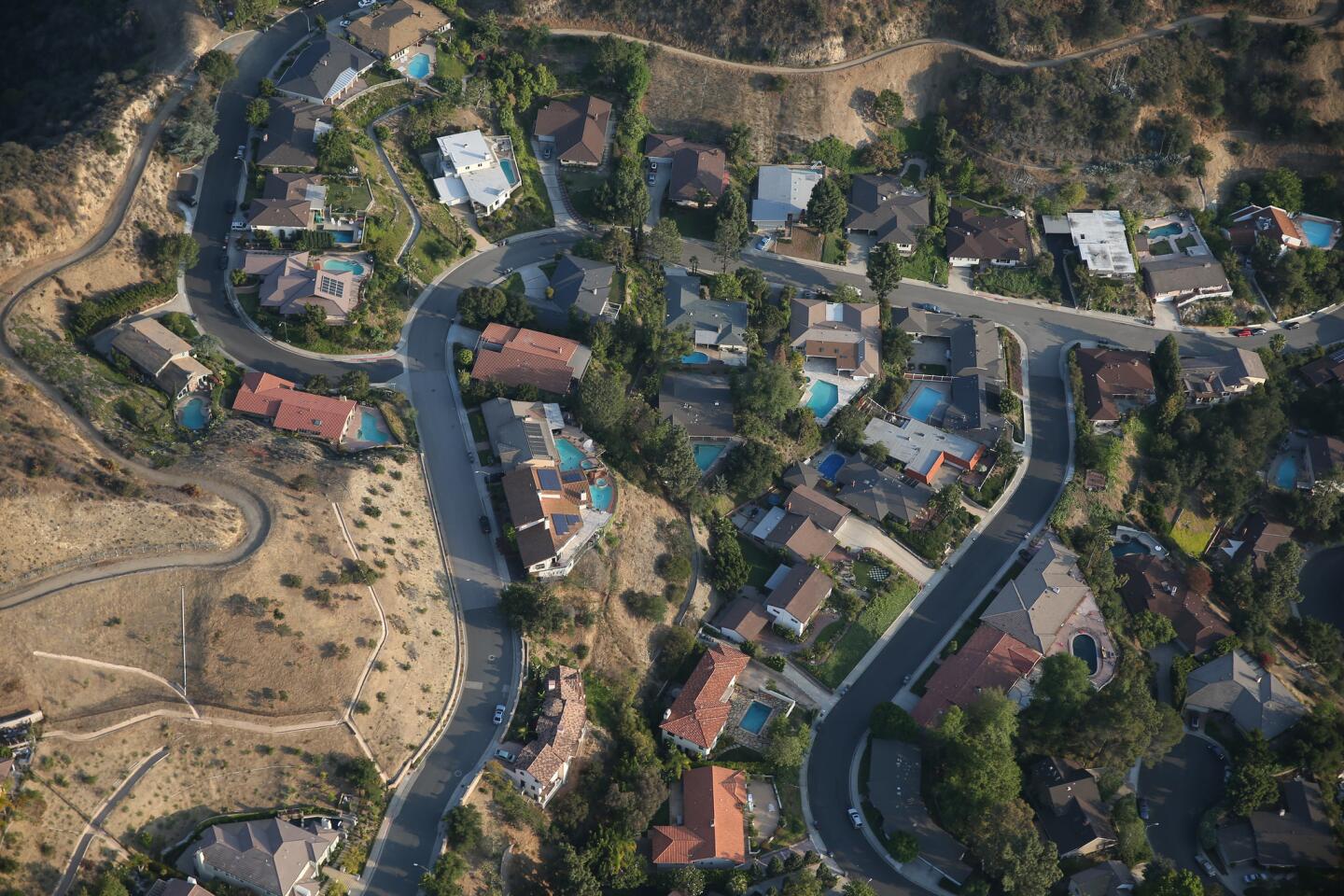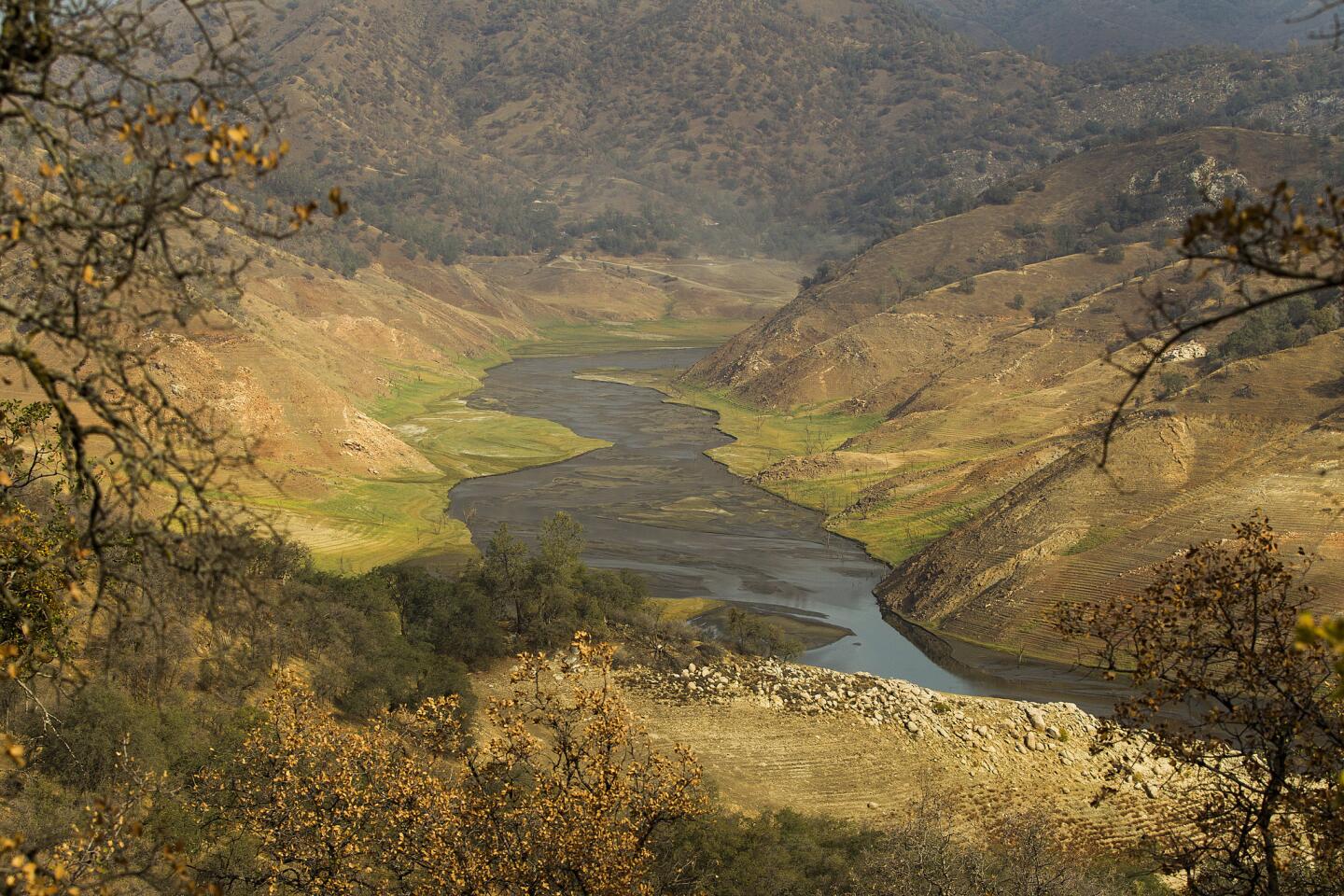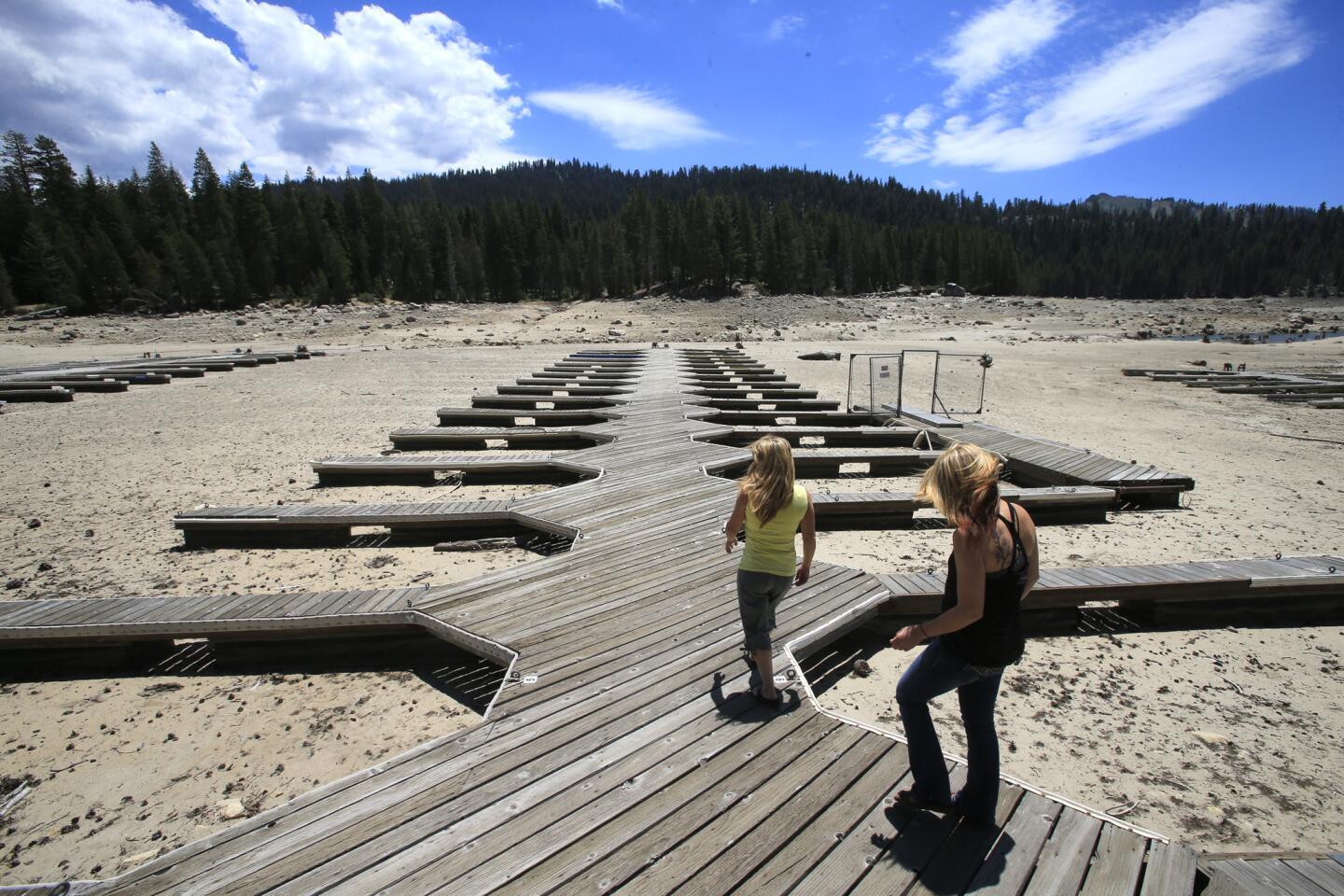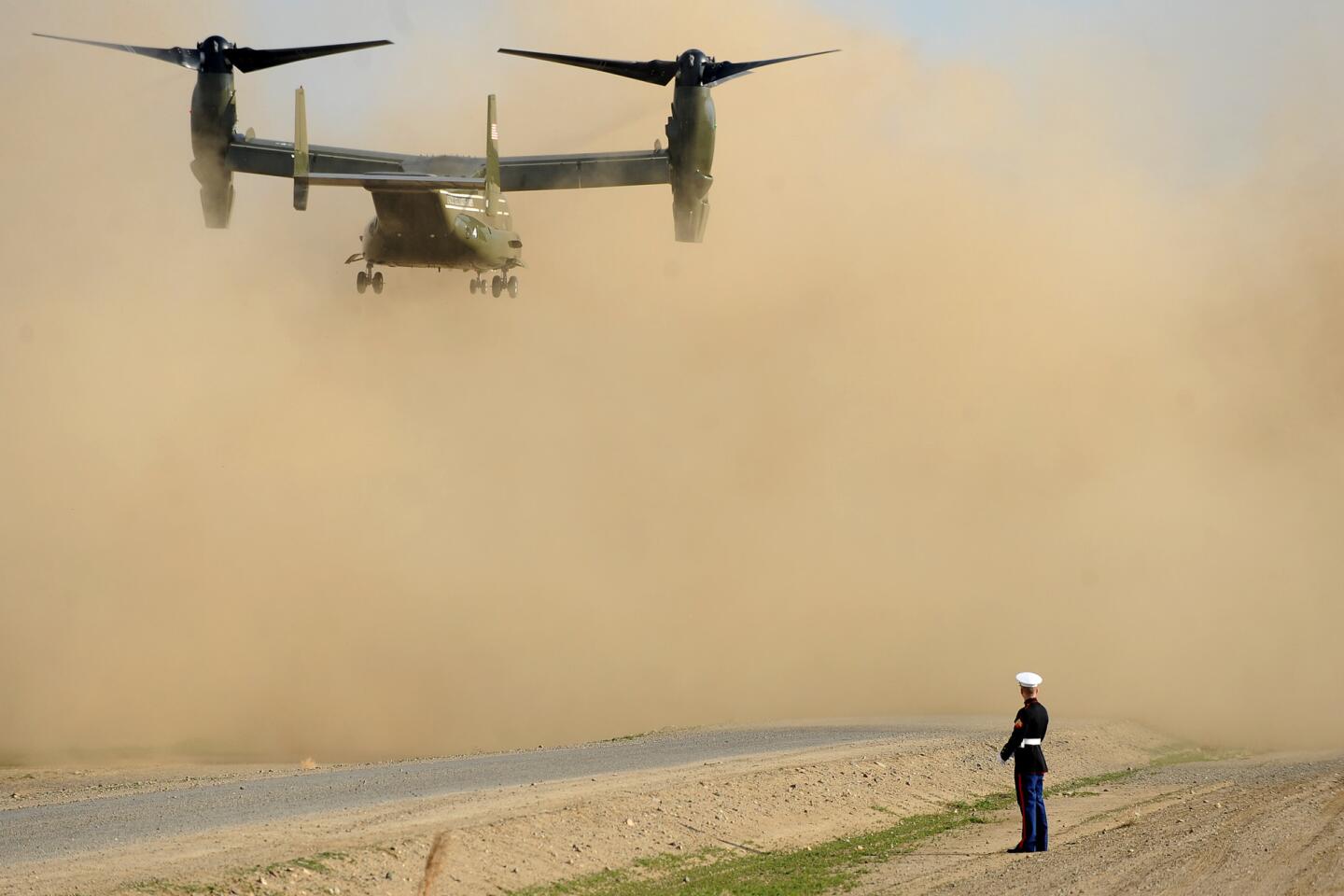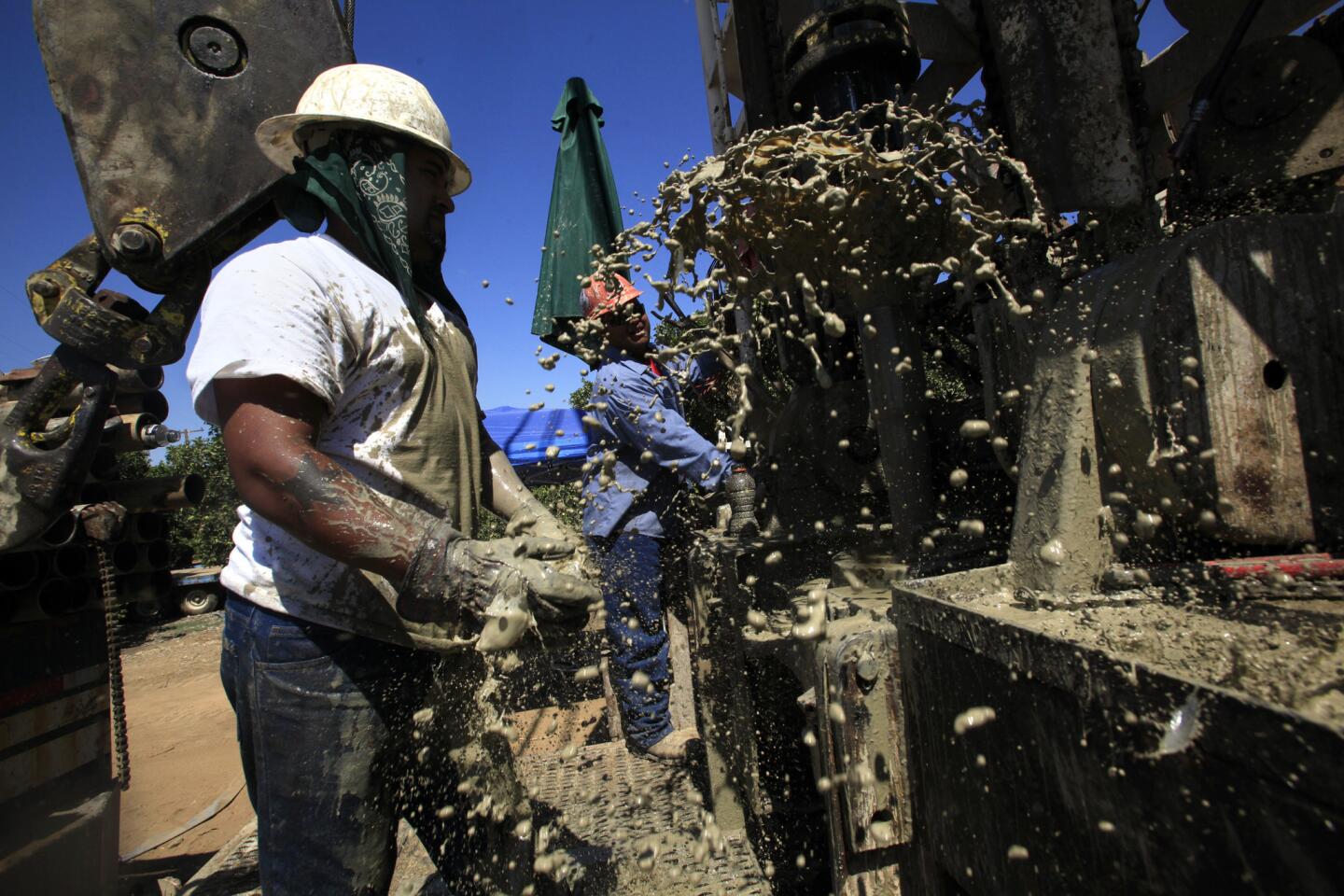No, California won’t run out of water in a year
- Share via
Lawmakers are proposing emergency legislation, state officials are clamping down on watering lawns and, as California enters a fourth year of drought, some are worried that the state could run out of water.
State water managers and other experts said Thursday that California is in no danger of running out of water in the next two years, even after an extremely dry January and paltry snowpack. Reservoirs will be replenished by additional snow and rainfall between now and the next rainy season, they said. The state can also draw from other sources, including groundwater supplies, while imposing tougher conservation measures.
“We have been in multiyear droughts and extended dry periods a number of times in the past, and we will be in the future,” said Ted Thomas, a spokesman for the California Department of Water Resources. “In periods like this there will be shortages, of course, but the state as a whole is not going to run dry in a year or two years.”
The headline of a recent Times op-ed article offered a blunt assessment of the situation: “California has about one year of water left. Will you ration now?”
Jay Famiglietti, senior water scientist at NASA’s Jet Propulsion Laboratory and a professor at UC Irvine, wrote about the state’s dwindling water resources in a March 12 column, citing satellite data that have shown sharp declines since 2011 in the total amount of water in snow, rivers, reservoirs, soil and groundwater in California.
In an interview Thursday, Famiglietti said he never claimed that California has only a year of total water supply left.
He explained that the state’s reservoirs have only about a one-year supply of water remaining. Reservoirs provide only a portion of the water used in California and are designed to store only a few years’ supply. But the online headline generated great interest. Famiglietti said it gave some the false impression that California is at risk of exhausting its water supplies.
The satellite data he cited, which measure a wide variety of water resources, show “we are way worse off this year than last year,” he said. “But we’re not going to run out of water in 2016,” because decades worth of groundwater remain.
Still, the state’s abysmal snowpack and below-average reservoir levels could exacerbate the overpumping of already depleted groundwater reserves — a problem detailed in an in-depth Los Angeles Times article Wednesday.
There’s little debate that the state’s water situation is troubling, but there is some improvement from last year. Water levels in some of the state’s largest reservoirs in Northern California are higher than last year at this time, largely because of big December storms. But some smaller Southern California reservoirs aren’t doing so well and have lower reserves than a year ago.
The Department of Water Resources did not have a readily available estimate of the total water supply in California or the amount expected to be used over the next year.
Just because California is not exhausting its water supply “doesn’t mean we’re not in a crisis,” said Leon Szeptycki, executive director of the Water in the West program at Stanford University, who called the state’s snowpack, at 12% of average, “both bad for this year but also a troubling sign for the future.”
State officials said stricter conservation measures, including watering restrictions for cities and big cuts in water deliveries to San Joaquin Valley farmers, will help reduce the drain on reservoirs.
Madelyn Glickfeld, director of the UCLA Water Resources Group at the Institute of the Environment and Sustainability, said the drought is so serious that stricter conservation measures are urgently needed. “But I’m confident California’s government will not let this get to the point where water is not coming out of peoples’ faucets.”
Twitter: @tonybarboza
ALSO:
Gov. Brown, lawmakers plan short- and long-term strategy on drought
California’s $1-billion emergency drought relief is tiny drop in bucket
More to Read
Sign up for Essential California
The most important California stories and recommendations in your inbox every morning.
You may occasionally receive promotional content from the Los Angeles Times.

